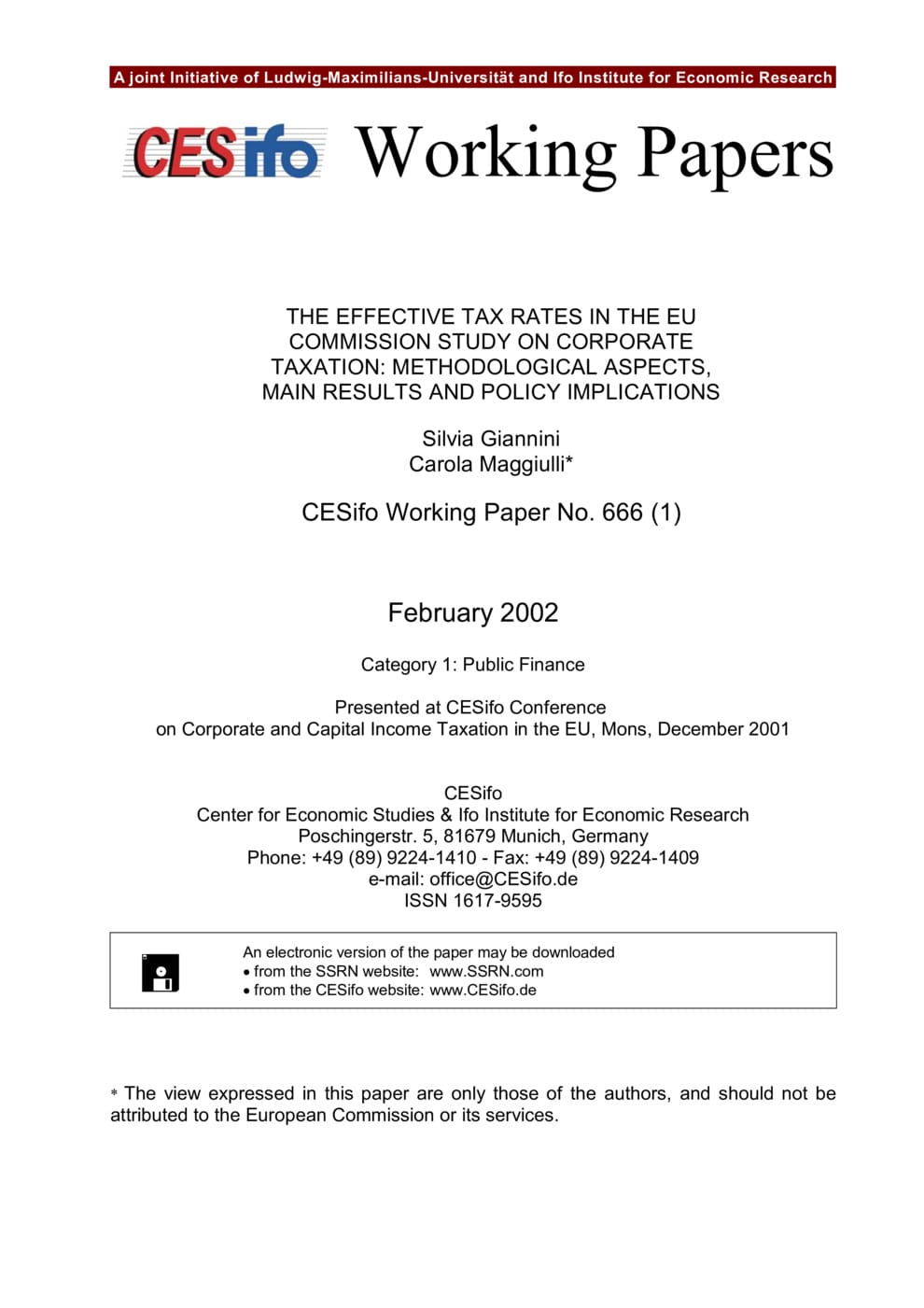The Effective Tax Rates in the EU Commission Study on Corporate Taxation: Methodological Aspects, Main Results and Policy Implications
CESifo, Munich, 2002
CESifo Working Paper No. 666

The paper has three aims. First, it presents the specific forward-looking methodology applied in the quantitative analysis undertaken in the Commission study, and discusses how it is able to overcome some of the most important limitations of the traditional King Fullerton approach. Second, it compares the results obtained by two different indicators, the traditional effective marginal tax rate and the effective average tax rate, the latter being particularly important to explain location decisions of multinational companies. Third, it discusses the usefulness of these indicators for policy makers, by summarising the overall results of the Commission study and their policy implications. All in all, these results show that the EU tax systems are very far from representing a level playing field for both domestic and international firms and that the size of the observed disparities in effective tax rates between Member States are mainly due to the differences in statutory tax rates. The picture arising from the quantitative analysis seems to point out the urgent need for a greater co-ordination in the EU, with a view to reducing the existing distortions and contributing to other important EU objectives.